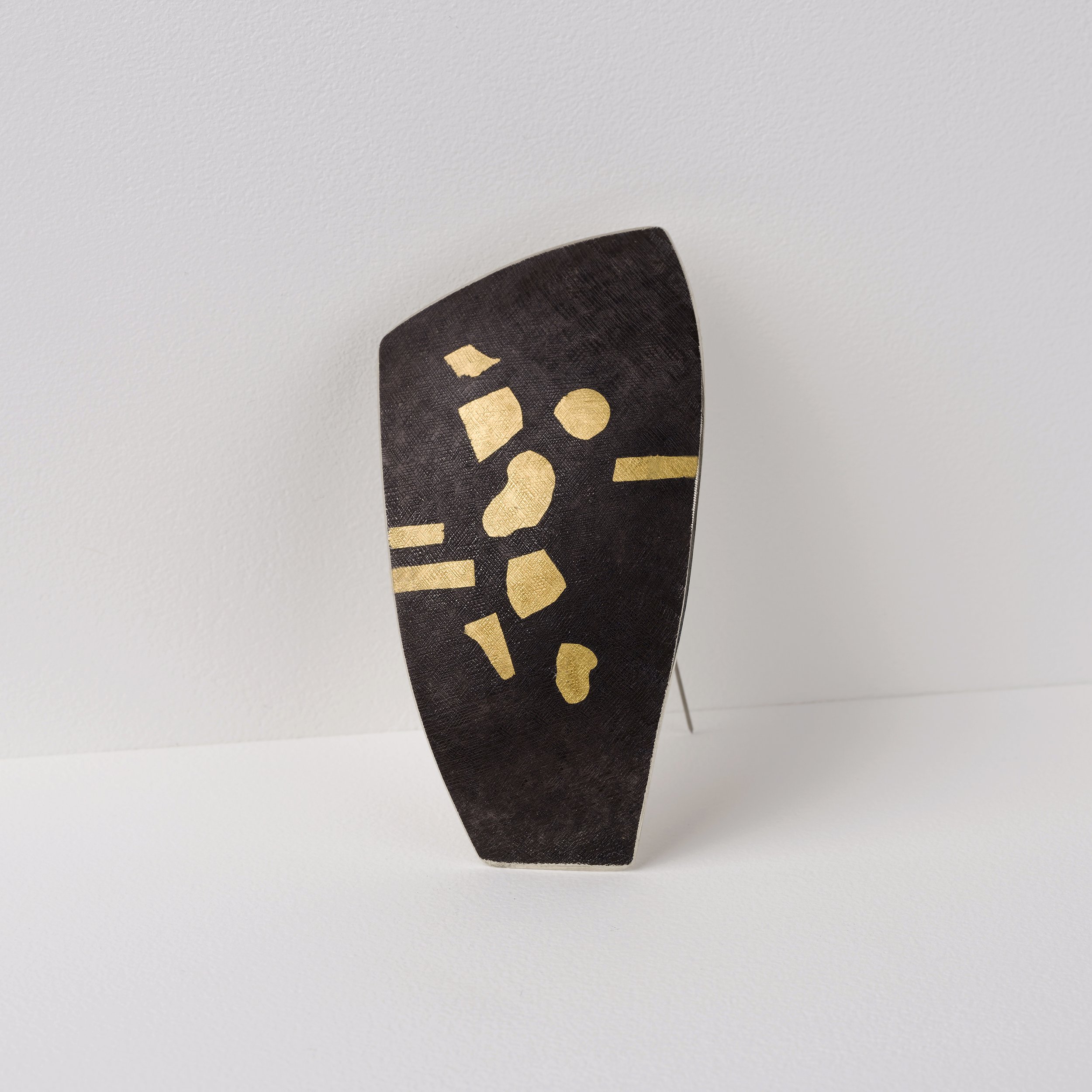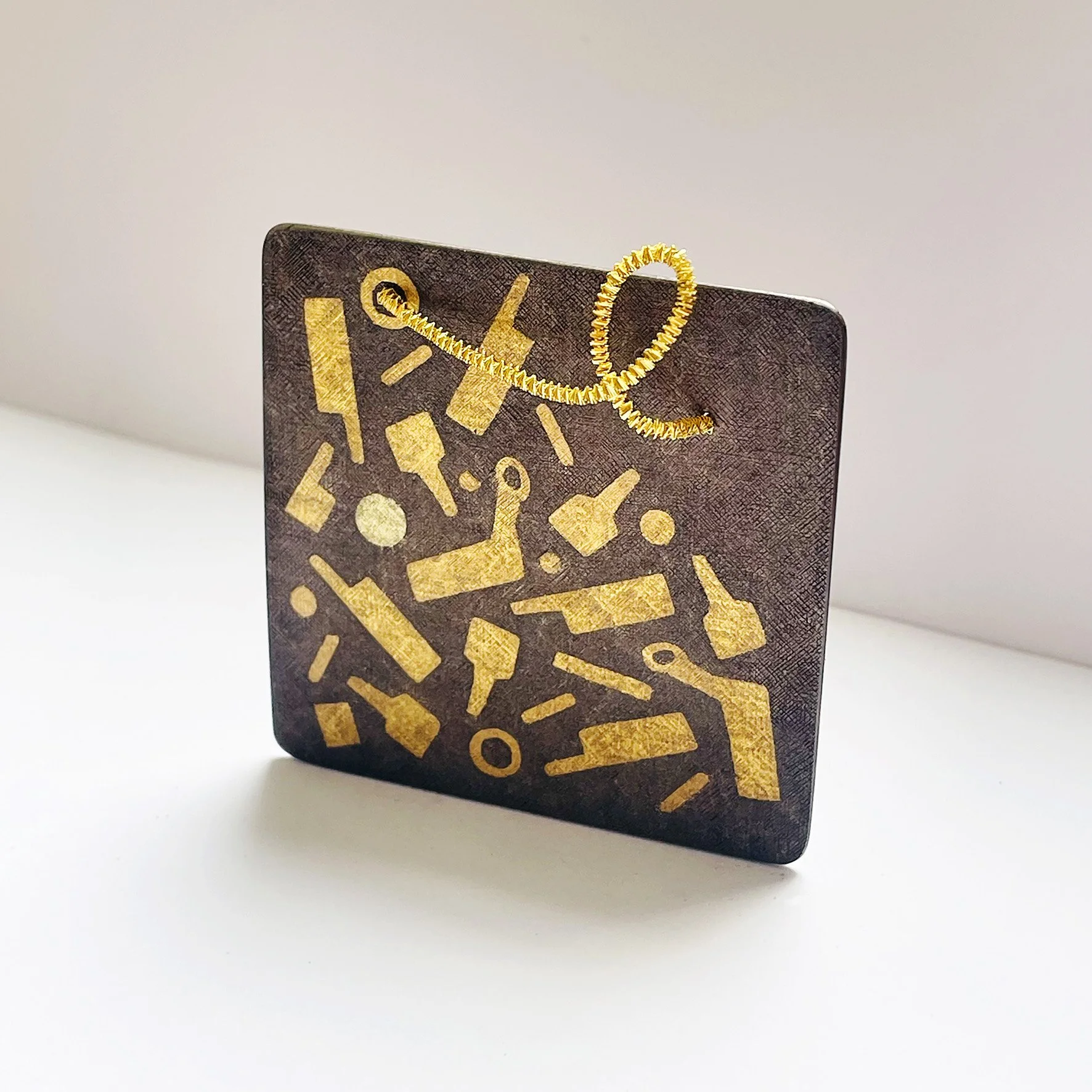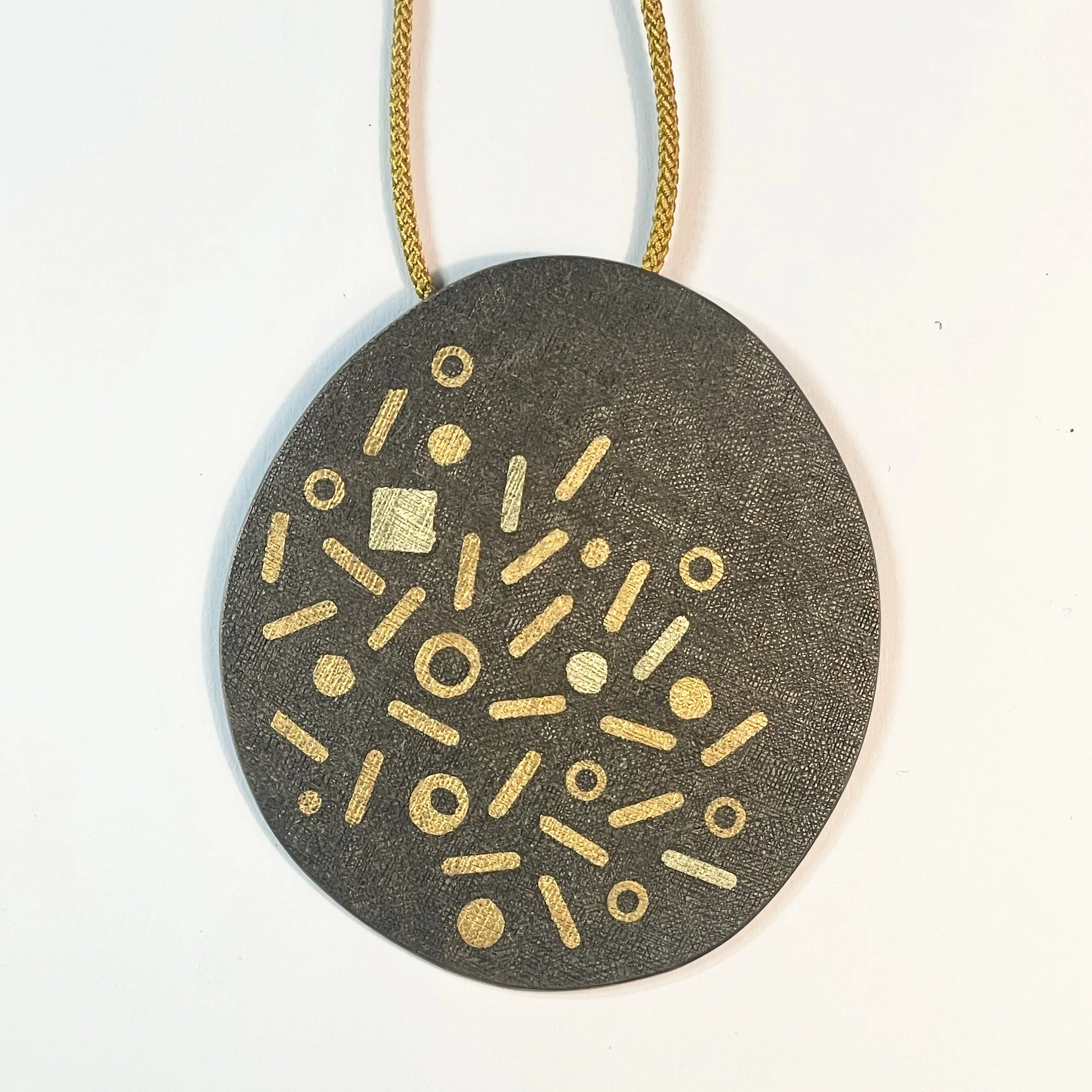Japanese Metalworking
I have an interest in Japanese metalworking particularly techniques that work with precious metals sparingly. The European Chemical Society in 2019 created the Endangered Materials Elements Periodic Table. This table identified that if we continue mining precious metals at the current rates then we risk running out of gold, silver and copper within as little as 100 years. In addition therefore to recovering precious metals from electronic waste we urgently need to develop frugal ways of working these culturally significant metals.
Gold, although found in many localities in Japan was never abundant. Japan’s frequent sumptuary laws also meant that gold was always a metal to be used sparingly. Consequently, Japanese metalsmiths developed various techniques that use a minimal amount of gold for maximum effect. These techniques include creating metal alloys (eg. Shakudo 95% copper 5% Gold), depletion gilding (bringing the gold to the surface) and different types of overlay and inlay that use thin gold foils.
In my own practice I have been exploring the technique Nunome Zogan that translates as cloth weave and uses foils 0.02mm thick. The gold is attached to the base metal by creating a cross-hatched ground made with chisels. The technique was originally used on iron and steel to decorate weapons although more recent practitioners have expanded this to include irogane copper alloys, brass and sterling silver.
Sandra Wilson, 2025 Mottainai Brooch, shibuichi, 24ct gold, small gold fingers from e-waste, 18ct green gold circle, gold plated wire, steel pin. Nunome zogan. Image: Sandra Wilson.
Sandra Wilson 2024, Mottainai Pendant, Shibuichi, 24ct yellow gold fingers from e-waste, 18ct green gold square and circles, yellow 8 braid cord. Nunome zogan. Image:Diarmid Weir



Process, Repetition and Time. Nunome Zogan
This video was filmed during a residency at Greywood Arts in Ireland and showcases the traditional Japanese metalwork technique Nunome zogan that uses gold sparingly. It highlights the importance of process, repetition and time in creativity.


